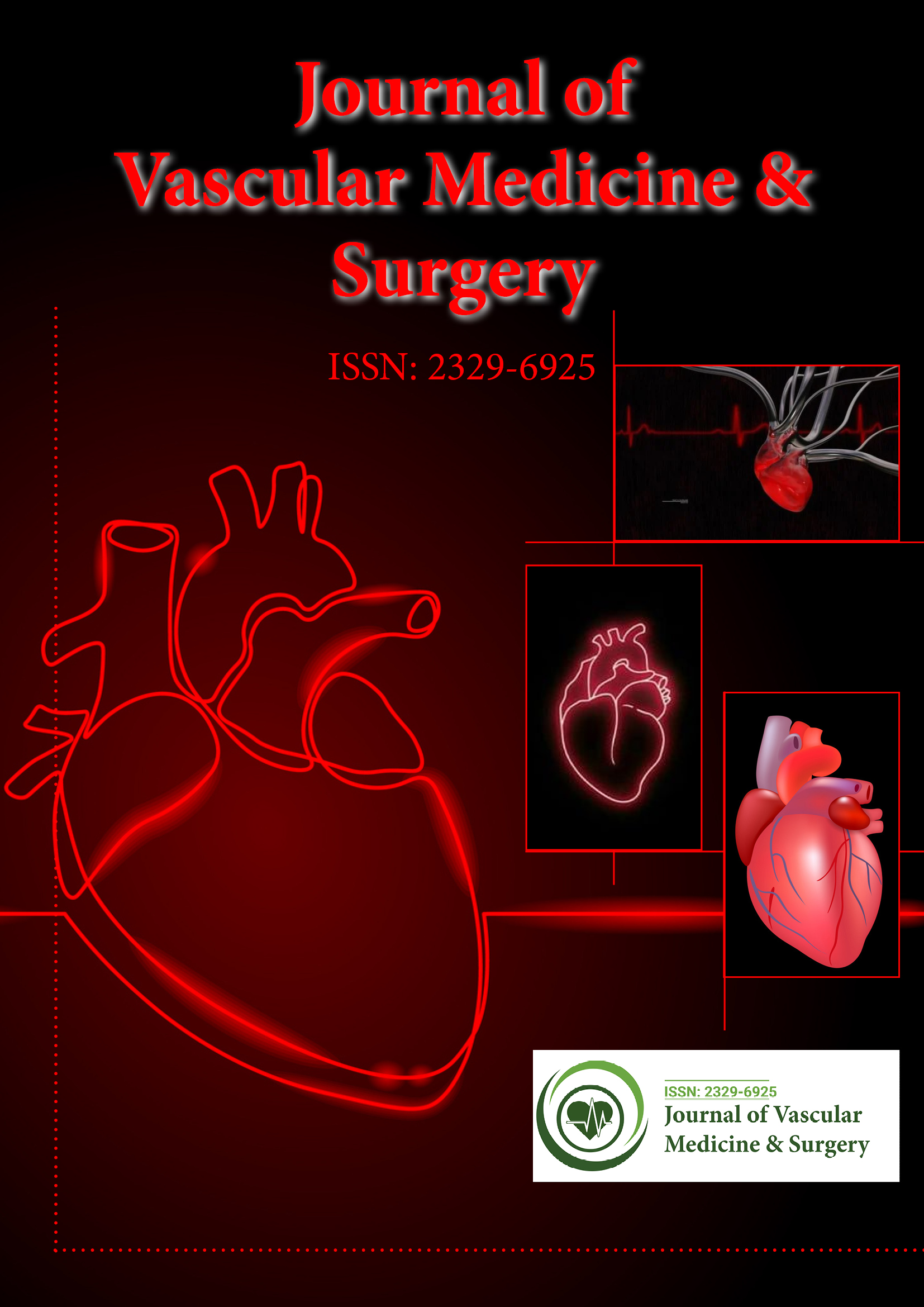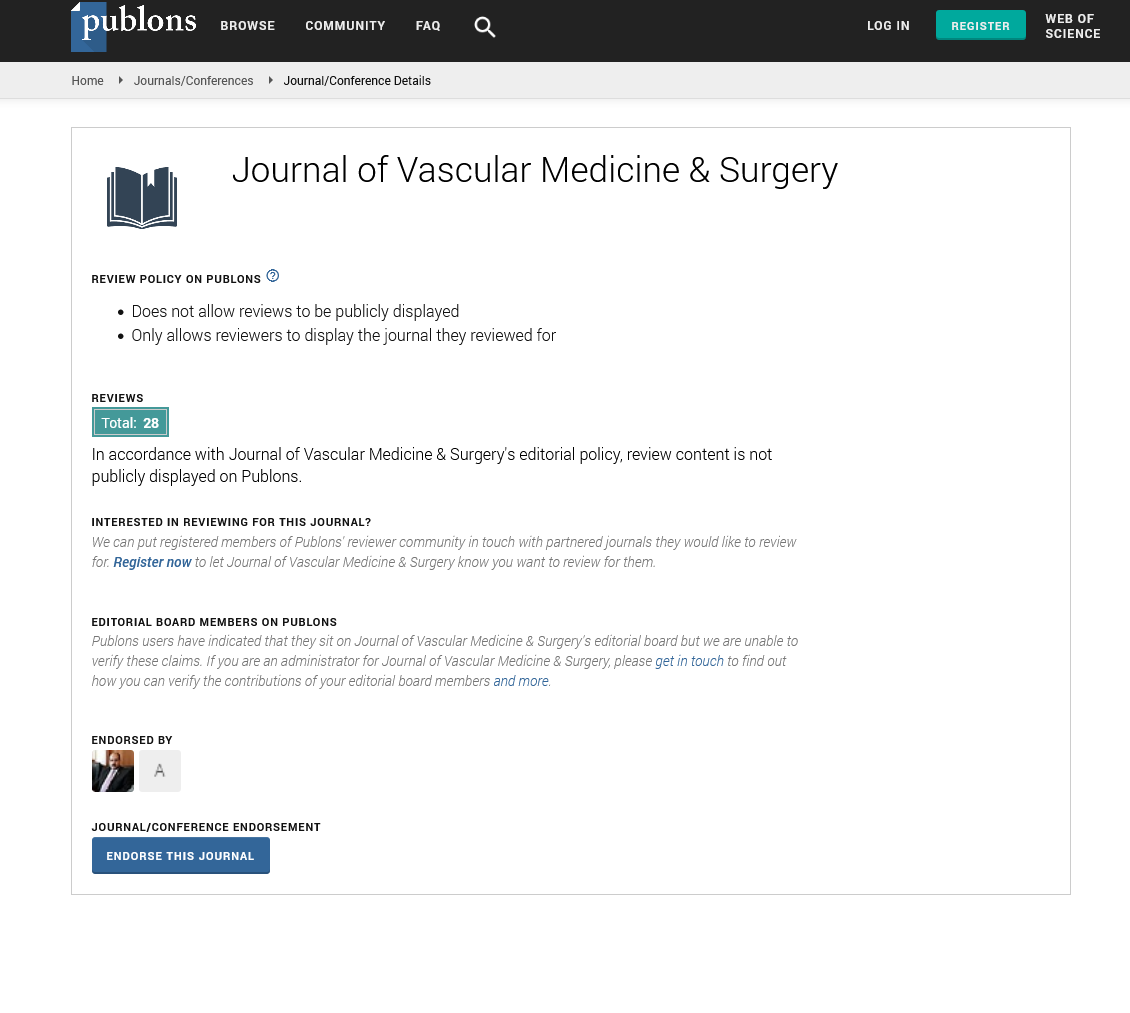Indexed In
- Open J Gate
- Academic Keys
- RefSeek
- Hamdard University
- EBSCO A-Z
- OCLC- WorldCat
- Publons
- Euro Pub
- Google Scholar
- SHERPA ROMEO
Useful Links
Share This Page
Journal Flyer

Open Access Journals
- Agri and Aquaculture
- Biochemistry
- Bioinformatics & Systems Biology
- Business & Management
- Chemistry
- Clinical Sciences
- Engineering
- Food & Nutrition
- General Science
- Genetics & Molecular Biology
- Immunology & Microbiology
- Medical Sciences
- Neuroscience & Psychology
- Nursing & Health Care
- Pharmaceutical Sciences
Commentary - (2025) Volume 13, Issue 6
Calcium Imbalance: The Root of Vascular Dysfunction
Hang Yin*Received: 22-May-2025, Manuscript No. JVMS-25-29215 ; Editor assigned: 26-May-2025, Pre QC No. JVMS-25-29215 (PQ); Reviewed: 09-Jun-2025, QC No. JVMS-25-29215 ; Revised: 16-Jun-2025, Manuscript No. JVMS-25-29215 (R); Published: 23-Jun-2025, DOI: 10.35248/2329-6925.25.13.604
Description
The vascular system is a highly dynamic network of arteries, veins and capillaries that functions as the primary conduit for oxygen, nutrients and cellular signaling throughout the human body. The stability of this system is critically dependent on the performance of Vascular Smooth Muscle Cells (VSMCs), which maintain vessel tone and blood pressure. Calcium ions are the key regulators of VSMC contraction and relaxation, thus playing a fundamental role in vascular physiology. Disruption in calcium homeostasis is increasingly being recognized as a driving force behind vascular dysfunction, including arterial stiffness, hypertension and atherosclerosis.
At the core of calcium regulation in VSMCs is the Sarco Endoplasmic Reticulum Ca2+ ATPase (SERCA) pump. SERCA plays a vital role in returning calcium to the Sarcoplasmic Reticulum (SR) after each contraction, ensuring proper relaxation of the muscle cell. When this function is compromised, calcium accumulates in the cytosol, leading to persistent contraction, oxidative stress and activation of cellular pathways that promote vascular remodeling. These changes often precede more visible signs of vascular disease, making calcium imbalance a potential early biomarker and therapeutic target.
Phenotypic switching and vascular calcification
Under normal physiological conditions, VSMCs exhibit a contractile phenotype, characterized by the expression of contractile proteins such as smooth muscle α-actin and myosin heavy chain. However, in response to chronic inflammation, oxidative stress or mechanical injury, VSMCs can switch to a synthetic phenotype, marked by increased proliferation, migration and secretion of extracellular matrix proteins. This phenotypic modulation, while initially reparative, can become pathological over time, contributing to intimal thickening and loss of vascular elasticity.
Even more concerning is the potential for VSMCs to undergo osteogenic transformation, where they begin expressing bone-related proteins such as Runx2 and osteocalcin. This leads to vascular calcification, a major predictor of cardiovascular morbidity and mortality. This transformation is tightly linked to calcium dysregulation, where inadequate calcium reuptake due to SERCA deficiency results in activation of pro-calcification pathways. Such calcified vessels lose their ability to respond to normal hemodynamic demands, increasing the risk of ischemic events.
Emerging evidence suggests that oxidative stress and chronic inflammation further exacerbate this osteogenic shift in VSMCs, particularly in metabolic disorders such as diabetes and chronic kidney disease. Pro-inflammatory cytokines, along with elevated phosphate and calcium levels, contribute to phenotypic switching, enhancing mineral deposition within the vascular wall. Additionally, microRNAs and epigenetic regulators have been implicated in modulating the expression of calcification-related genes. Understanding these mechanisms opens avenues for targeted therapies aimed at restoring calcium homeostasis and inhibiting pathological VSMC differentiation. Preventing vascular calcification may significantly reduce cardiovascular events, particularly in high-risk populations and remains a critical goal in cardiovascular medicine.
SERCA dysfunction: An early and treatable target
SERCA, especially the SERCA2b isoform, is abundantly expressed in VSMCs. Its activity is essential for maintaining low cytosolic calcium levels following muscle contraction. In pathological states, downregulation or dysfunction of SERCA is observed, leading to elevated intracellular Ca2+ and disrupted calcium oscillation patterns. This not only triggers phenotypic switching but also promotes mitochondrial dysfunction and cellular apoptosis.
Emerging research suggests that SERCA dysfunction may be one of the earliest events in vascular pathogenesis, occurring before significant structural changes are visible. This opens new avenues for early diagnostic strategies, including the measurement of SERCA activity or calcium flux in patient-derived cells. Pharmacological activation of SERCA using agents such as CDN1163 or gene therapy approaches to enhance SERCA2b expression are under investigation and show promise in restoring calcium homeostasis and preventing vascular degeneration.
Conclusion
Vascular health is intricately tied to the regulation of intracellular calcium and SERCA plays a central role in this balance. The dysfunction of SERCA pumps contributes significantly to the pathophysiology of a wide range of cardiovascular diseases, including arterial stiffness, hypertension and vascular calcification. Understanding the molecular underpinnings of calcium imbalance in VSMCs not only improves our grasp of vascular biology but also identifies new therapeutic and diagnostic targets.
By focusing on restoring calcium homeostasis, particularly through SERCA modulation, clinicians and researchers can address the root causes of vascular dysfunction rather than just its symptoms. Further studies are warranted to explore the longterm efficacy and safety of SERCA-targeted therapies. As we deepen our molecular understanding of vascular disease, interventions aimed at cellular calcium regulation may hold the key to preventing and reversing vascular aging and dysfunction.
Citation: Yin H (2025). Calcium Imbalance: The Root of Vascular Dysfunction. J Vasc Surg. 13: 604
Copyright: © 2025 Yin H. This is an open-access article distributed under the terms of the Creative Commons Attribution License, which permits unrestricted use, distribution and reproduction in any medium, provided the original author and source are credited.

